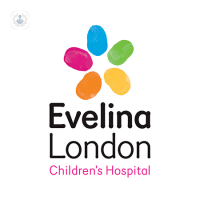What is joint hypermobility?
Joint hypermobility, also called hypermobility or Ehlers-Danlos syndrome, is a hereditary disorder that occurs when a person has greater flexibility in joints, tendons, muscles and cartilage.
What are the symptoms?
This disorder can produce symptoms such as the following:
- Backaches and scoliosis
- Pain in muscles and joints, such as the knees, fingers, hips and elbows
- Muscle stiffness and spasms
- Easy predisposition to bruising
- Dislocations
- Symptoms outside the joints, such as varicose veins, hernias or stretchy skin
Why does hypermobility occur?
The exact cause of joint hypermobility is unknown, however it has been confirmed that genetics play a major role. It is thought that a genetic mutation in the collagen fibers that affect the elasticity of tendons, ligaments, the skin and blood vessels causes the condition. Hypermobile joints are often referred to as loose joints and those with the condition are referred to as being “double jointed”.
Can it be prevented?
As the disorder is genetic in nature, it cannot be prevented, but complications can be avoided. Exaggerated flexion of the wrists or joints in the fingers should be avoided, that is, the fingers and the wrists shouldn’t be over extended or cracked. High-impact exercises should also be avoided.
What is the treatment?
Currently, there is no specific cure, but the effects can be mitigated with drugs (analgesics and non-steroidal anti-inflammatory drugs) and low-impact exercises, such as yoga or swimming. Improving muscle strength to protect the joints is vital, so your doctor may recommend occupational therapy or physiotherapy sessions to help with symptoms. You can also take home measures to reduce pain and stiffness by keeping joints warm, such as, having warm baths and using deep heat creams.
03-11-2015 02-11-2023ipermobilità
What is joint hypermobility?
Joint hypermobility, also called hypermobility or Ehlers-Danlos syndrome, is a hereditary disorder that occurs when a person has greater flexibility in joints, tendons, muscles and cartilage.
What are the symptoms?
This disorder can produce symptoms such as the following:
- Backaches and scoliosis
- Pain in muscles and joints, such as the knees, fingers, hips and elbows
- Muscle stiffness and spasms
- Easy predisposition to bruising
- Dislocations
- Symptoms outside the joints, such as varicose veins, hernias or stretchy skin
Why does hypermobility occur?
The exact cause of joint hypermobility is unknown, however it has been confirmed that genetics play a major role. It is thought that a genetic mutation in the collagen fibers that affect the elasticity of tendons, ligaments, the skin and blood vessels causes the condition. Hypermobile joints are often referred to as loose joints and those with the condition are referred to as being “double jointed”.
Can it be prevented?
As the disorder is genetic in nature, it cannot be prevented, but complications can be avoided. Exaggerated flexion of the wrists or joints in the fingers should be avoided, that is, the fingers and the wrists shouldn’t be over extended or cracked. High-impact exercises should also be avoided.
What is the treatment?
Currently, there is no specific cure, but the effects can be mitigated with drugs (analgesics and non-steroidal anti-inflammatory drugs) and low-impact exercises, such as yoga or swimming. Improving muscle strength to protect the joints is vital, so your doctor may recommend occupational therapy or physiotherapy sessions to help with symptoms. You can also take home measures to reduce pain and stiffness by keeping joints warm, such as, having warm baths and using deep heat creams.


How normal is hypermobility (double-jointed) and what pain can it cause?
Dr Anthony Hammond
2024-11-21
Joint hypermobility is a normal phenomenon but for some, it can lead to pain. Dr Anthony Hammon shares his expertise. Learn from him about what exactly hypermobility is, causes, how it's treated and more. Mostrare di più


All about osteogenesis imperfecta in children
Mr Gregory Firth
2024-11-15
Osteogenesis imperfecta (OI), or brittle bone disease, is a genetic disorder in children that causes fragile bones, making them susceptible to fractures with minimal trauma. Mostrare di più
Medici esperti in ipermobilità
-
Dr Clarissa Pilkington
ReumatologiaEsperto in:
- Artrite giovanile
- Lupus
- Dermatomiosite
- ipermobilità
- Trattamento del dolore
- Reumatologia pediatrica
-
Professor Roger Wolman
ReumatologiaEsperto in:
- Osteoporosi
- Artrosi
- Dolore alla spalla
- ipermobilità
- Artrite infiammatoria
- Medicina dello sport
-
Dr Stephanie Kaye-Barrett
ReumatologiaEsperto in:
- Osteoporosi
- Gotta
- artrite
- Fibromialgia
- Artrite reumatoide
- ipermobilità
-
Dr Eileen Baildam
ReumatologiaEsperto in:
- Artrite giovanile
- Sclerodermia
- Lupus
- ipermobilità
- Stanchezza cronica
- Dolore cronico
-
Dr Vinay Shivamurthy
ReumatologiaEsperto in:
- artrite
- ipermobilità
- Diarrea
- Lupus
- Reumatologia pediatrica
- Dolore cronico
- Visualizzare tutti

Sussex Premier Health Eastbourne
Sussex Premier Health Eastbourne
Eastbourne District General Hospital, Kings Drive, Eastbourne, East Sussex
No existe teléfono en el centro.
Se utilizzi questo numero di Top Doctors autorizzi al trattamento dei dati a fini statistici e commerciali. Per maggiori informazioni, leggi la nostra l’informativa sulla privacy
Top Doctors

Evelina London Children's Hospital Private Healthcare
Evelina London Children's Hospital Private Healthcare
Floor 1 St Thomas' Hospital, Westminster Bridge Road, London. SE1 7EH
No existe teléfono en el centro.
Se utilizzi questo numero di Top Doctors autorizzi al trattamento dei dati a fini statistici e commerciali. Per maggiori informazioni, leggi la nostra l’informativa sulla privacy
Top Doctors

The Portland Hospital - part of HCA Healthcare
The Portland Hospital - part of HCA Healthcare
205 - 209 Great Portland St. W1W 5AH
No existe teléfono en el centro.
Se utilizzi questo numero di Top Doctors autorizzi al trattamento dei dati a fini statistici e commerciali. Per maggiori informazioni, leggi la nostra l’informativa sulla privacy
Top Doctors
-
Sussex Premier Health Eastbourne
Eastbourne District General Hospital, Kings Drive, Eastbourne, East Sussex, EastbourneEsperto in:
- Cataratta
- Chirurgia delle palpebre
- Chirurgia per la preservazione delle articolazioni
- La salute delle donne
- Urologia
-
Evelina London Children's Hospital Private Healthcare
Floor 1 St Thomas' Hospital, Westminster Bridge Road, London. SE1 7EH, SE1 South Bank LondonEsperto in:
- Dermatologia pediatrica
- Sviluppo del bambino
- Nutrizione infantile
- Pediatria
- Pediatria preventiva
- Sorveglianza sanitaria infantile
-
The Portland Hospital - part of HCA Healthcare
205 - 209 Great Portland St. W1W 5AH, Central LondonEsperto in:
- Chirurgia spinale neurologica
- Chirurgia spinale ortopedica
- Cura maternità
- Gravidanza
- Scoliosi
- Fecondazione in vitro (FIV)
- Visualizzare tutti







